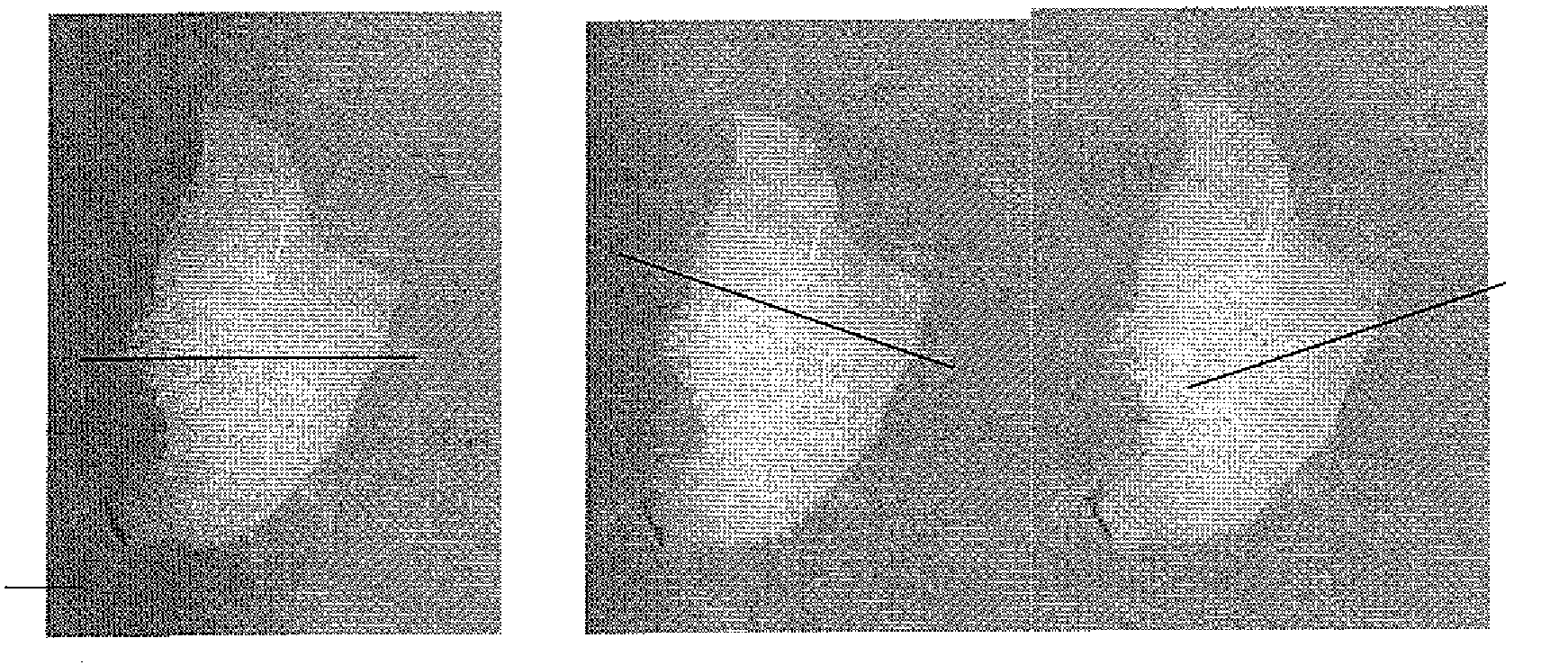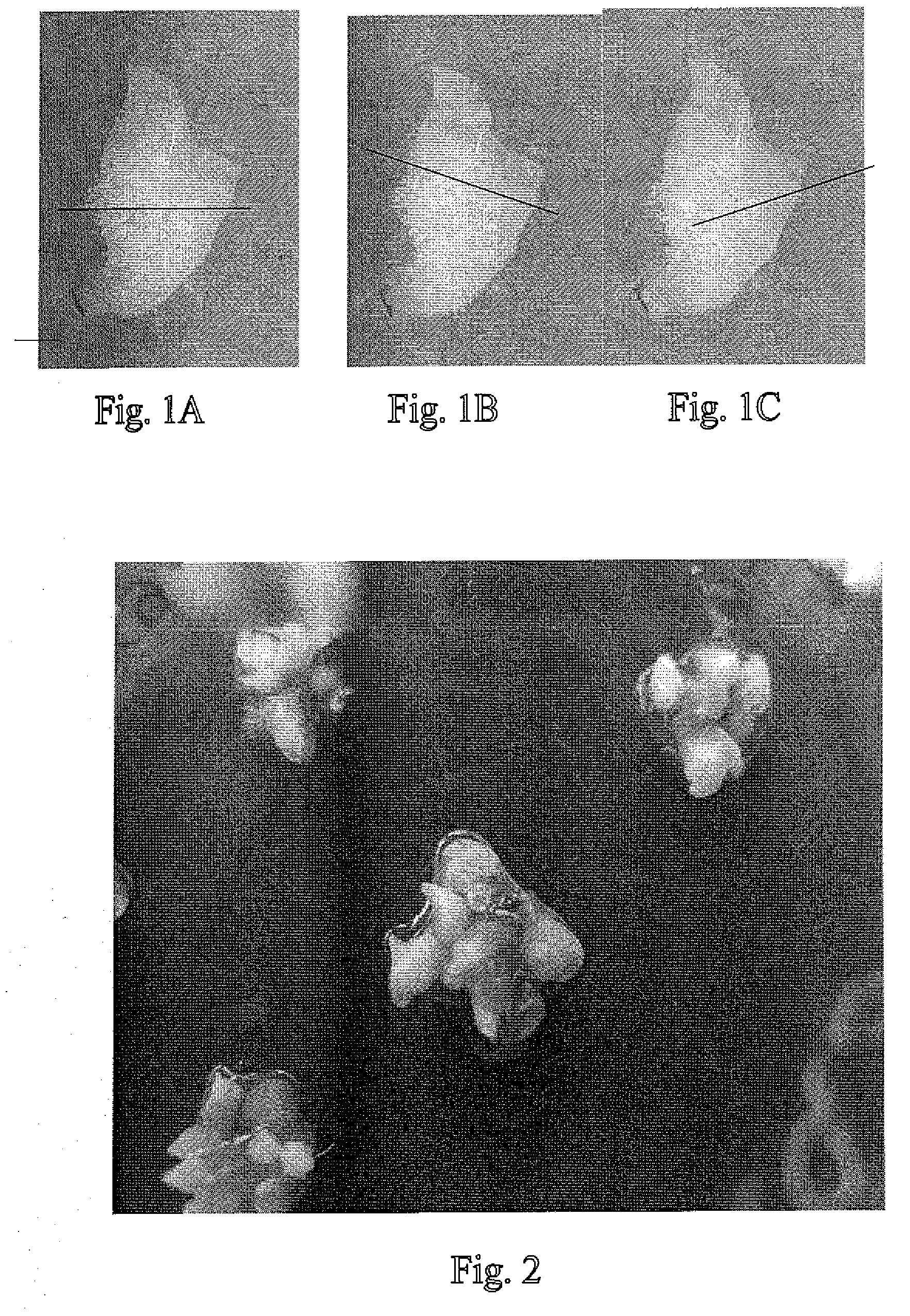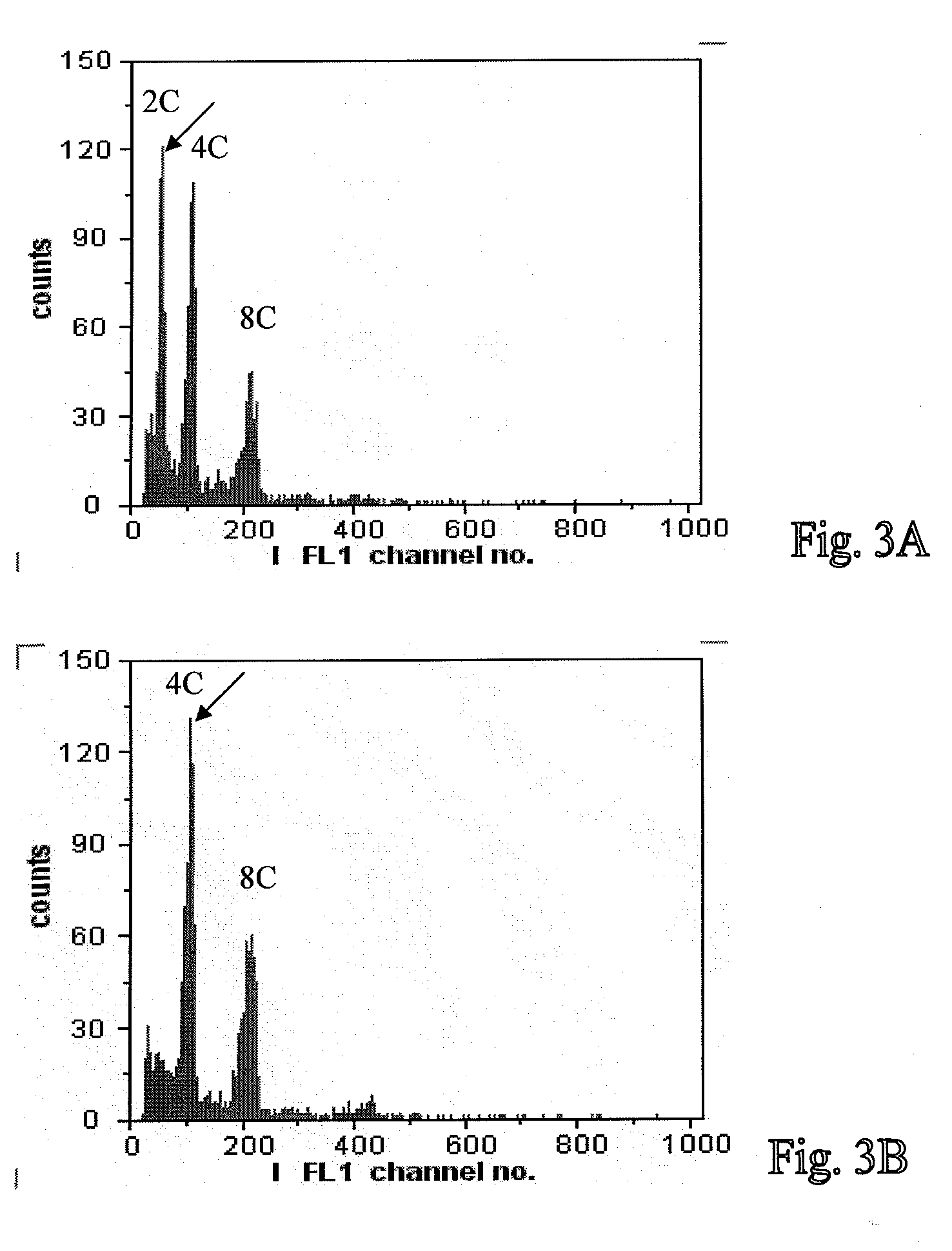Method for Producing Polyploid Plants of Orchids
a polyploid plant and orchid technology, applied in the field of orchid polyploid plant production, can solve the problems of inability to further improve, limited breeding of new-type cultivars, and insufficient genetic base of phalaenopsis /i> in the market today, and achieve the effect of reducing the cost of breeding
- Summary
- Abstract
- Description
- Claims
- Application Information
AI Technical Summary
Benefits of technology
Problems solved by technology
Method used
Image
Examples
experiment 1
[0057]This experiment is conducted to demonstrate the effect of cutting the protocorm or PLB upon chromosome doubling of orchid regenerated plants.
Experimental Material:
1. Preparing a Seeding Medium:
[0058]In this experiment the seeding medium is selected from MSp medium whose ingredients include MS salt (1.1 g / L), tryptone (1.0 g / L), sucrose (20 g / L), potato (8.5 g / L) and agar (8.5 g / L). Preferably, the medium having a pH value of 5.8 is sterilized in an autoclave at 121□ for 15 minutes.
2. Preparing a PLB-Inducing Medium and a Regenerating Medium:
[0059]In this experiment the PLB-inducing medium and the regenerating medium are selected from T2 medium whose ingredients include Hyponex No. 1 (3.5 g / L), citric acid (0.1 g / L), tryptone (1.0 g / L), sucrose (20 g / L), potato (20 g / L), banana (20 g / L), charcoal (1.0 g / L) and agar (8.5 g / L). Preferably, the medium having a pH value of 5.5 and is sterilized in an autoclave at 121□ for 15 minutes.
3. Protocorm Sources:
[0060](1). Preparing protoco...
experiment 2
[0077]This experiment is conducted to evaluate the stability of chromosomes in the induced polyploid plants during cultivation. Any change of the chromosome ploidy levels during the cultivation of the induced tetraploid plants of Phal. aphrodite subsp. formosana and Phalaenopsis bellina (as identified in the section “C” of the experiment 1 above) obtained from the diploid Phal. aphrodite subsp. formosana and Phalaenopsis bellina (as disclosed in the section “A” of the experiment 1 above) are used as an indicator of the stability level.
Method of Experiment:
[0078]The tetraploid plantlets of Phal. aphrodite subsp. formosana and Phalaenopsis bellina (as identified in the section “C” of Experiment 1 above) are transplanted to plastic pots (with a diameter of 1.7 inches) which is provided with a potting medium containing peat moss. The tetraploids of Phal. aphrodite subsp. formosana and Phalaenopsis bellina are cultured in a culture room where the temperature is within 27±2□, the illumina...
PUM
| Property | Measurement | Unit |
|---|---|---|
| height | aaaaa | aaaaa |
| height | aaaaa | aaaaa |
| height | aaaaa | aaaaa |
Abstract
Description
Claims
Application Information
 Login to View More
Login to View More - R&D
- Intellectual Property
- Life Sciences
- Materials
- Tech Scout
- Unparalleled Data Quality
- Higher Quality Content
- 60% Fewer Hallucinations
Browse by: Latest US Patents, China's latest patents, Technical Efficacy Thesaurus, Application Domain, Technology Topic, Popular Technical Reports.
© 2025 PatSnap. All rights reserved.Legal|Privacy policy|Modern Slavery Act Transparency Statement|Sitemap|About US| Contact US: help@patsnap.com



